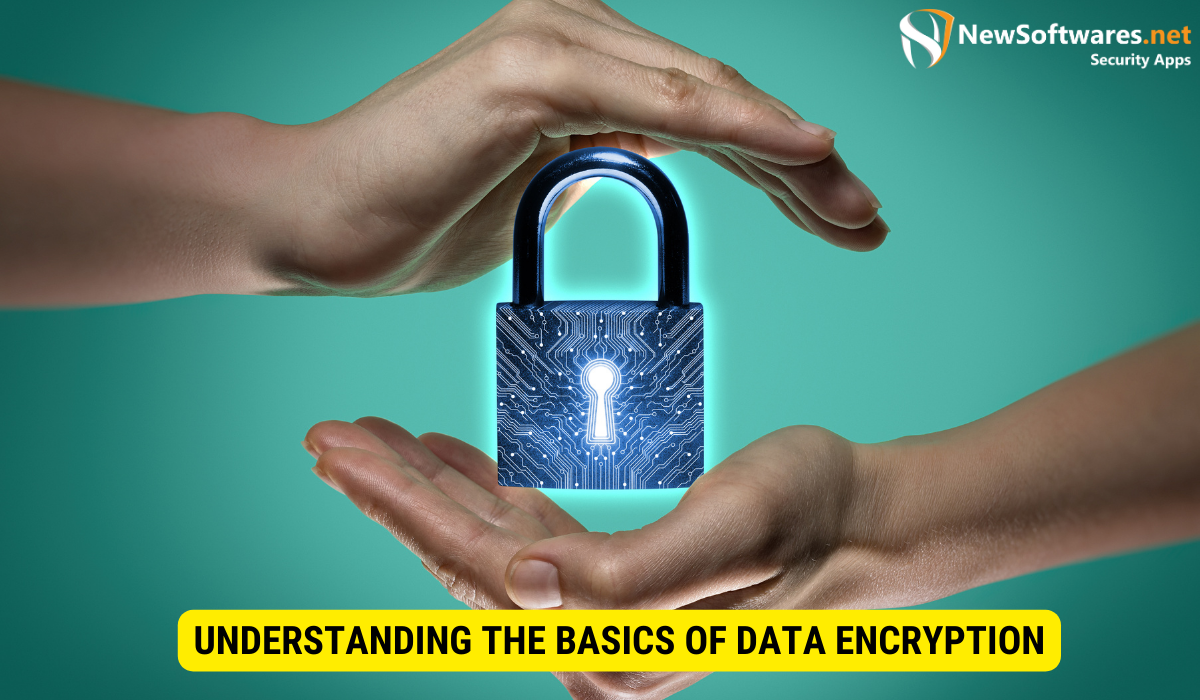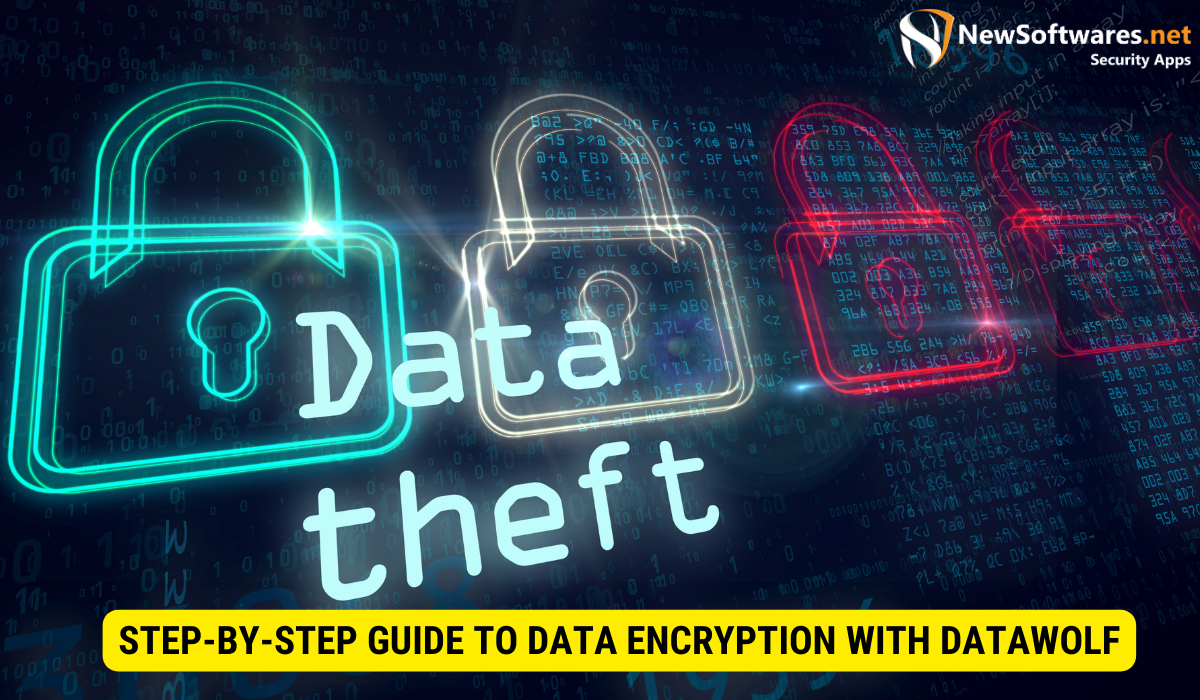In today’s digital world, data security is of highest importance. With cyber threats on the climb, it is vital for individuals and businesses to shield their sensitive information from unauthorized access. One effective way to do this is through data encryption.
In this step-by-step tutorial, together we will explore the basics of data encryption, the role of Data Wolf in securing our data, and how to use Data Wolf for data encryption.
Understanding the Basics of Data Encryption

Data encryption is a crucial aspect of present technology that ensures the secrecy and integrity of sensitive information. It plays a vital role in shielding data from unauthorized access and tampering. Together, we will delve deeper into the concept of data encryption, its importance, and the mechanisms behind it.
What is Data Encryption?
Data encryption is a process that involves transforming information, known as plaintext, into an unreadable format called ciphertext. This transformation is achieved using mathematical algorithms and encryption keys. The ciphertext can only be converted back into plaintext using the corresponding decryption key, ensuring that only allowed parties can access and understand the data.
Imagine you have a confidential document that you want to send to someone securely. By encrypting the document, you convert its contents into an unintelligible form. This ensures that even if the document falls into the wrong hands during transmission, it remains incomprehensible without the decryption key.
Importance of Data Encryption
The importance of data encryption cannot be overstated in today’s digital landscape. With the rising prevalence of cyber threats and data breaches, shielding sensitive information has become a top priority for individuals and organizations alike.
Encryption provides second layer of protection, making it extremely difficult for illegal individuals to access or decipher the data. In the event of a data violation encrypted data remains secure and unusable without the encryption key. This is particularly crucial when transmitting data over insecure networks, such as the internet, where the risk of eavesdropping and tampering is high.
By implementing robust encryption measures, organizations can meet the terms with data protection regulations and build trust with their customers. Encryption helps maintain the confidentiality of personal and financial data, ensuring that sensitive information remains private and secure.
How Does Data Encryption Work?
Data encryption relies on complex mathematical algorithms that convert plaintext into ciphertext. These algorithms use encryption keys to perform the conversion, and the same key is required to decrypt the data.
One widely used encryption method is the Advanced Encryption Standard (AES). It is a symmetric-key algorithm, meaning that the same key is used for both encryption and decryption. AES has become the standard for securing sensitive data due to its efficiency and high level of security.
Another commonly used encryption method is the Rivest-Shamir-Adleman (RSA) algorithm. Unlike symmetric-key algorithms, RSA is a public-key encryption system that uses a pair of keys – one for encryption and another for decryption. The encryption key is made unrestricted, while the decryption key remains private. This allows anyone to encrypt data using the public key, but only the intended recipient with the private key can decrypt it.
It is worth noting that encryption algorithms continue to evolve as technology enhances and new threats emerge. Cryptographers and security experts constantly work to develop stronger encryption methods to counteract potential vulnerabilities.
In conclusion, data encryption is a fundamental component of modern information security. It ensures the secrecy and integrity of sensitive data, protecting it from illegal access and tampering. By understanding the fundamentals of data encryption, individuals and organizations can take preventive measures to safeguard their valuable information.
Introduction to Data Wolf
Overview of Data Wolf
Data Wolf is a powerful data encryption software that provides a user-friendly interface for securing your sensitive data. It provides a broad range of encryption algorithms, ensuring that your information remains safe from illegal access. With DataWolf, you can easily encrypt files and folders, as well as securely transmit encrypted data over various channels.
Key Features of Data Wolf
Data Wolf offers several key features that make it an ideal choice for data encryption:
- Multiple Encryption Algorithms: Data Wolf supports a variety of encryption algorithms, including AES, RSA, and many others. This allows you to choose the algorithm that best suits your security needs.
- File and Folder Encryption: With Data Wolf, you can encrypt individual files or entire folders, ensuring that all the data inside remains secure.
- Secure Data Transmission: Data Wolf enables you to transmit encrypted data securely over various channels, such as email or cloud storage services.
- User-Friendly Interface: The intuitive interface of Data Wolf makes it easy for both beginners and skilled users to encrypt their data without any hassle.
- Customization Options: Data Wolf allows you to customize encryption settings, such as key size and encryption strength, to meet your specific requirements.
Benefits of Using Data Wolf for Data Encryption
Using Data Wolf for data encryption offers several benefits:
- Enhanced Data Security: Data Wolf employs robust encryption algorithms to ensure the highest level of data security, protecting your sensitive information from unauthorized access.
- Ease of Use: With its user-friendly interface, Data Wolf makes data encryption a straightforward process, even for those with limited technical knowledge.
- Flexibility: Data Wolf offers a wide range of encryption options, allowing you to choose the algorithm and settings that best fit your security requirements.
- Secure Data Transmission: By using Data Wolf, you can securely transmit encrypted data, providing an additional layer of protection when sharing sensitive information.
- Peace of Mind: Using Data Wolf for data encryption gives you peace of mind, knowing that your valuable information is safeguarded against unauthorized access.
Setting Up Data Wolf for Data Encryption
System Requirements for Data Wolf
Before setting up Data Wolf, ensure that your system meets the following requirements:
- Operating System: Data Wolf is compatible with Windows, macOS, and Linux.
- Processor: A modern processor with at least 2 GHz speed.
- Memory: Minimum 4 GB RAM for optimal performance.
- Hard Disk Space: At least 500 MB of free disk space for installation.
- Internet Connection: Data Wolf requires an internet connection for updates and online features.
Installing and Configuring Data Wolf
To install and configure Data Wolf, follow these steps:
- Download the Data Wolf installation file from the official website.
- Run the installation file & follow the on-screen instructions to complete the installation process.
- Once installed, launch the Data Wolf application.
- Go to the settings menu and configure your encryption preferences, such as the default encryption algorithm and key size.
- Save your settings & exit the settings menu.
Understanding Data Wolf Interface
The Data Wolf interface is designed to be user-friendly, making it simple for users to navigate and perform encryption tasks. The major interface consists of a menu bar, toolbar, and a file explorer pane on the left. You can access various encryption functions and settings through the menu bar and toolbar. The file explorer pane allows you to browse and select the files or folders you want to encrypt.
Step-by-Step Guide to Data Encryption with DataWolf

Preparing Your Data for Encryption
Before encrypting your data with Data Wolf, it is essential to prepare the files or folders:
- Gather all the files or folders that you want to encrypt.
- Ensure that the files or folders do not contain any sensitive information that may be compromised if unauthorized access occurs.
- Create a backup of your files & folders in case any issues arise during the encryption process.
Initiating the Encryption Process
Follow these steps to encrypt your data using Data Wolf:
- Launch the Data Wolf application.
- In the file explorer pane, navigate to the location of the files or folders you want to encrypt.
- Select the files or folders you want to encrypt by clicking on them while holding down the Ctrl key (Windows) or Command key (macOS).
- Click on the “Encrypt” button on the toolbar or select the “Encrypt” option from the menu bar.
- Choose the encryption algorithm you want to use from the available options.
- Set the desired encryption settings, such as the key size and encryption strength.
- Click on the “Encrypt” button to start the encryption process.
Monitoring the Encryption Progress
While the encryption process is underway, Data Wolf provides a progress indicator to keep you informed:
- A progress bar shows the overall progress of the encryption process.
- The number of files or folders encrypted and the remaining files or folders are displayed.
Verifying the Encryption Outcome
After the encryption process is complete, you should verify the outcome:
- Check that all the selected files or folders have been encrypted.
- Attempt to access the encrypted files or folders to ensure that they are no longer readable without the decryption key.
- Compare the file sizes before and after encryption to confirm that the encrypted files are larger.
Key Takeaways
- Data encryption is the process of encoding information to protect it from unauthorized access.
- Encryption algorithms and encryption keys play a vital role in data encryption.
- Data Wolf is a powerful data encryption software that offers multiple encryption algorithms and user-friendly features.
- By using Data Wolf, users can secure their sensitive data and transmit encrypted data securely.
- Follow a step-by-step guide to prepare, initiate, monitor, and verify the data encryption process with Data Wolf.
Frequently Asked Questions (FAQs)
Why is data encryption important?
Data encryption is important as it ensures the security and privacy of sensitive information, preventing unauthorized access and data breaches.
What encryption algorithms does Data Wolf support?
Data Wolf supports a wide range of encryption algorithms, including AES, RSA, and many others.
Can I encrypt individual files and folders with Data Wolf?
Yes, Data Wolf allows you to encrypt both individual files and entire folders.
How secure is the data transmission feature in Data Wolf?
Data Wolf employs strong encryption algorithms to ensure the security of data during transmission, providing an extra layer of protection.
Can I modify the encryption settings in Data Wolf?
Yes, Data Wolf allows you to customize encryption settings, including key size and encryption strength, to suit your specific requirements.
Conclusion
Data encryption is a central aspect of data security in today’s digital landscape. By understanding the basics of data encryption and utilizing powerful tools like Data Wolf, individuals and businesses can protect their sensitive data from illegal access. This step-by-step tutorial has provided an overview of data encryption, introduced Data Wolf as a reliable encryption software, and guided users through the process of setting up Data Wolf and encrypting their data. By following these instructions, users can enhance the security of their valuable data and gain peace of mind knowing their information is safeguarded.
